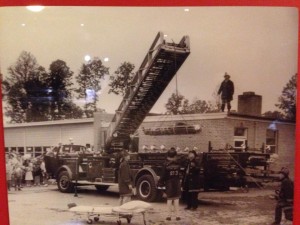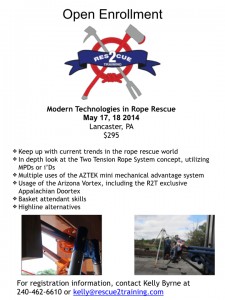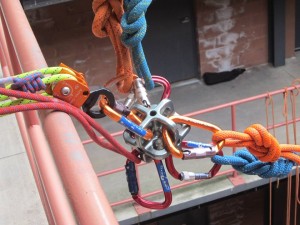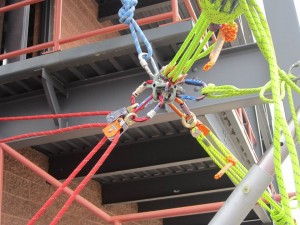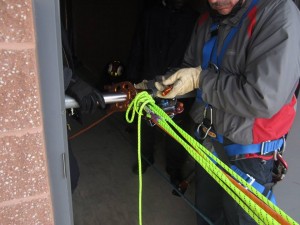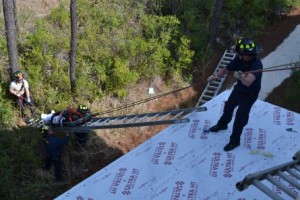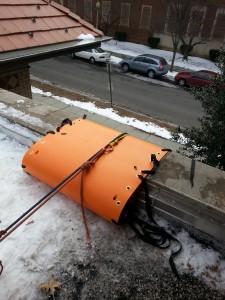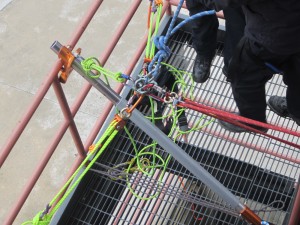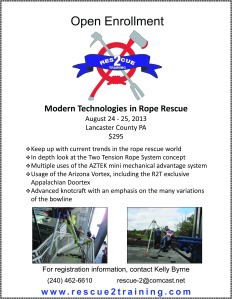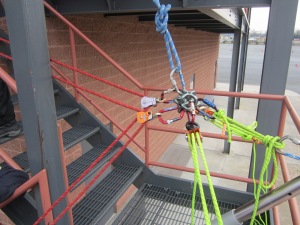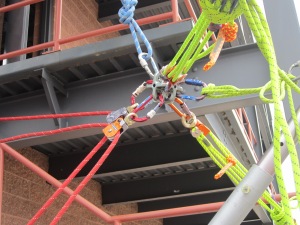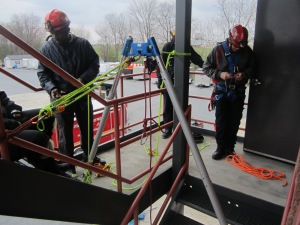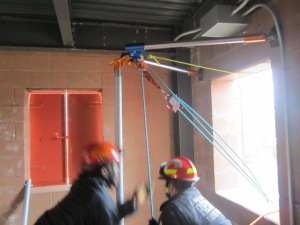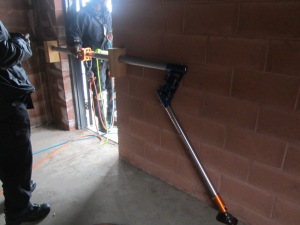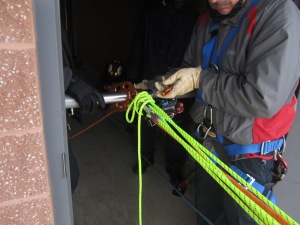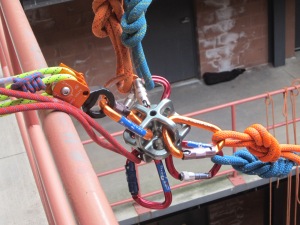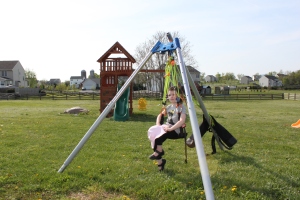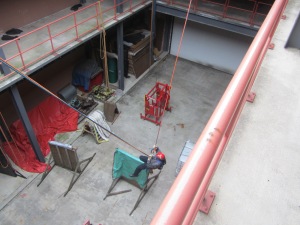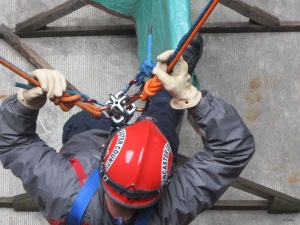Here are two great videos from DRR Rescue posted on youtube that show how to construct a 1-1-1 picket system, which is three pickets placed in a row.
Two things stood out to me in these videos. First, I really like the system they used to tie the pickets together. I’ve seen a few different variations on the technique, most involving some sort of windlass to tighten the webbing. Doing that requires more hardware, as well as driving in another piece of rebar. The videos show what amounts to a non working 3:1 with webbing.
The second thing that really stood out was how much force this system was able to hold. They put over 6ooo lbs of force on the system. While the picket did flex a little bit, it did not noticeably pull forward in the ground. I’m anxious to try this in the rain soaked, clay dirt around my house!
Thanks again to DRR for sharing these with the world. Be sure to check out the tutorial section on the website as well as their field guide, that thing is full of great, easy to apply info. http://www.desertrescue.com

